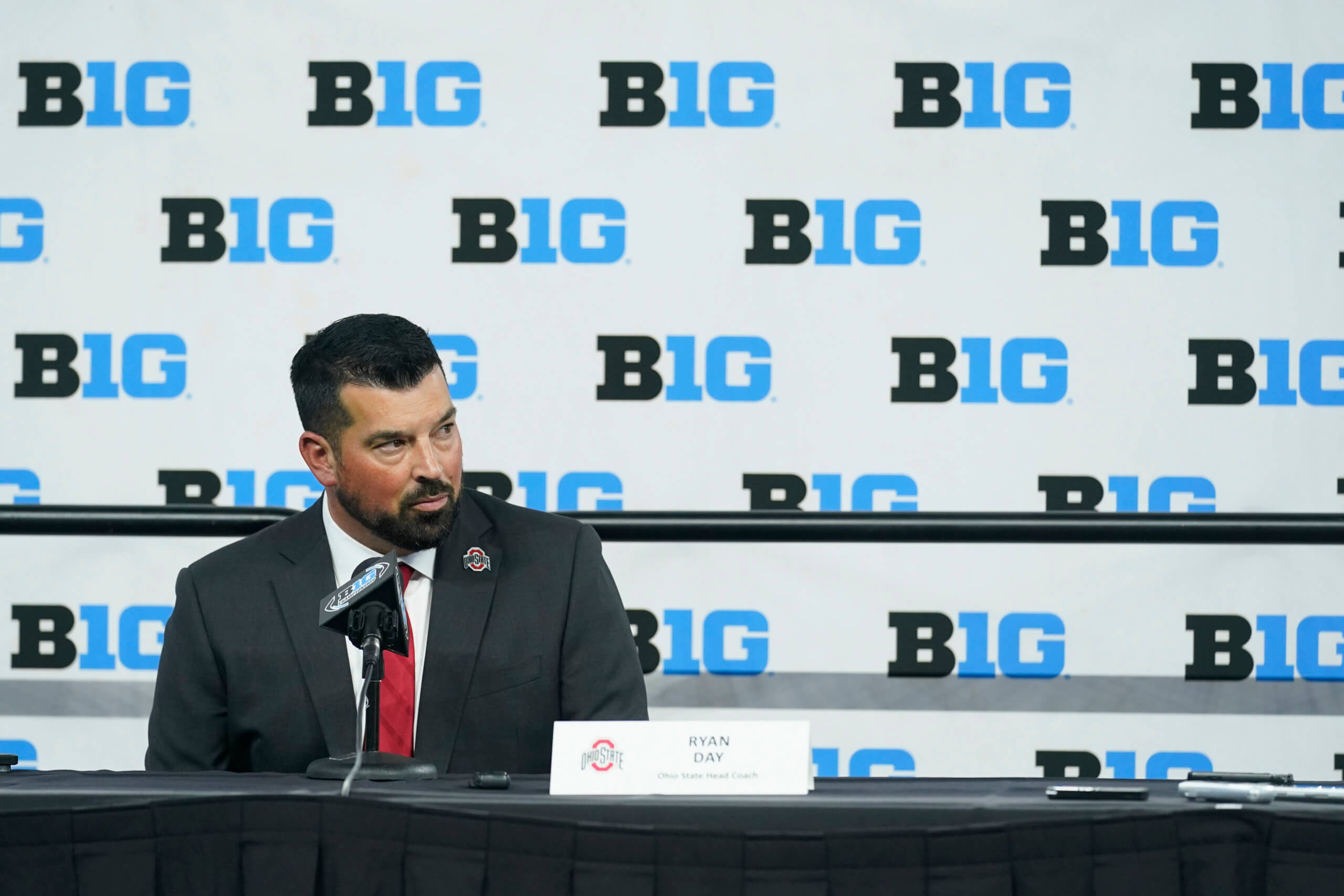
Ohio State head coach Ryan Day talks to reporters during an NCAA college football news conference at the Big Ten Conference media days, at Lucas Oil Stadium, Wednesday, July 27, 2022, in Indianapolis. (AP Photo/Darron Cummings)
When the Southeastern Conference (SEC) signed a ten-year, $3 billion contract with ESPN in December of 2020 to broadcast their games, it was seen as a seismic event for the future of college football.
Now, roughly a year and a half later, the Big Ten is nearing a deal that will net them more than three times that amount as the conference’s teams will split more than $1 billion per year. When the negotiations are completed, it’s expected that FOX, CBS, and NBC would each share TV rights for the conference during different TV slots each Saturday.
The Big Ten was able to command such a sum, in part, because they are the only conference that has been able to keep up with the SEC in terms of both quality and quantity when it comes to football. They announced earlier this summer that USC and UCLA would join by 2024, with more teams presumed to follow suit over the next few years. As such, they will soon match the SEC’s sixteen teams. Some speculate that the new TV money could be enough to finally entice Notre Dame to officially join the conference in the years to come.
As exorbitant as that sum sounds, though, the networks involved wouldn’t make that offer unless they were convinced they would still make a sizeable profit from broadcasting the games. As an ever-increasing percentage of the population cuts ties with traditional networks, cable companies, and satellite providers, appointment viewing has become even more valuable, and few events match the appeal of live sports. Even something as relatively inconsequential as this season’s first NFL preseason game—a lackluster Thursday night affair between the Jacksonville Jaguars and the Las Vegas Raiders—would have been one of the 50 highest-rated shows on television last year, pulling in more than 5 million viewers.
The reason why that’s the case, however, is relevant to more than just our viewing habits.
Why we love live sports
There’s something interesting about the appeal of watching live programming in a world that increasingly revolves around on-demand entertainment. While there are many explanations for why so many gravitate toward such events, one of the most relevant reasons is the sense of belonging that comes from taking part in a shared, live experience.
And that sense of community has taken on an even more central role in the lives of many as social media amplifies the fear of missing out and the benefit of taking part for those watching events unfold in real-time.
People were made to crave community with others. While that community can look different for different people, even extreme introverts yearn for a sense of belonging. Being part of the conversation on Twitter or Facebook, even in a passive role, can satisfy that need.
Of course, that feeling is a poor substitute for the kind of belonging that is based on something more than a singular, shared experience, but that’s why those who come to rely on this type of interaction seek it over and over again.
The community we need
One way the Christian faith has most consistently grown over the centuries is by providing community and a sense of belonging to the lost around us.
During the early church period, for example, far more people were saved through their daily interactions with anonymous believers than through the writings of the church fathers, the preaching of famous teachers, or any of the ways that we often think of as being more historically significant. The chance to join a community of people they enjoyed spending time with was one of the primary drivers for growth, and the same continues to be the case today.
As such, it’s important to take a close look at your community of faith to see if it could fill a similar role.
- Do the believers around you love one another and take care of one another in a way that others would find appealing?
- Is your group open to new people, or have you become so comfortable with one another that it can seem like a closed circle to those on the outside?
- If you weren’t already part of that community, would you want to join it?
Ask God to help you answer those questions honestly, and ask for some perspective from those not currently part of your community of faith. If you can’t think of anyone who could help you with that last part, then maybe it’s a good indication that you need to stretch your circle a bit to be more welcoming to those not already in it.
The body of Christ should be able to offer the lost around us a sense of community and belonging for which they are desperately searching. That has been and continues to be one of the primary ways Jesus wants to use the church to help people encounter him.
How useful will you be today?














